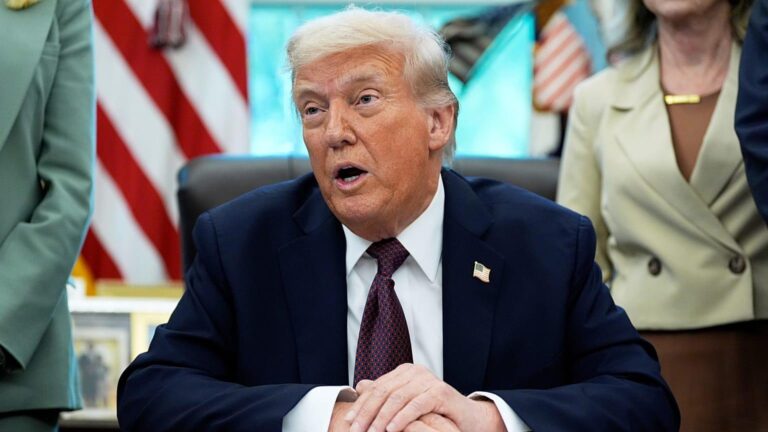In a significant legal development, a federal judge has dismissed former President Donald Trump’s $15 billion defamation lawsuit against the New York Times. The high-profile case, which accused the newspaper of publishing false and damaging claims, has been closely watched as a test of press freedom and the bounds of defamation law. The court’s ruling marks a major victory for the Times and underscores the stringent standards plaintiffs must meet in suing media organizations, particularly public figures like Trump.
Trump’s $15 Billion Defamation Lawsuit Against New York Times Dismissed by Court
The court has decisively dismissed the high-profile defamation lawsuit filed by former President Donald Trump against the New York Times, which sought a staggering $15 billion in damages. The lawsuit, initiated in response to multiple articles alleging misconduct, was criticized by legal experts as lacking sufficient evidence to meet the stringent standard required for defamation against a public figure. The judge ruled that the Times’ reporting was protected under the First Amendment, emphasizing the essential role of free press in holding public officials accountable.
Legal analysts highlight several key factors influencing the dismissal:
- Insufficient Proof: The plaintiff failed to demonstrate actual malice or reckless disregard for the truth, a critical requirement in defamation cases involving public figures.
- Freedom of the Press: The decision reinforces constitutional protections for journalistic investigations, especially on matters of public interest.
- Impact on Future Cases: This ruling may set a precedent discouraging similarly ambitious defamation claims and encouraging responsible reporting.
| Aspect | Outcome |
|---|---|
| Lawsuit Amount | $15 Billion |
| Court’s Decision | Dismissed |
| Reason | First Amendment Protection |
| Implication | Strengthens Press Freedom |
Legal Reasoning Behind the Judge’s Decision to Throw Out the Case
At the core of the judge’s ruling was the principle of freedom of the press, a cornerstone of American constitutional law enshrined in the First Amendment. The court emphasized that public figures like Donald Trump face a higher threshold to prove defamation, specifically needing to demonstrate “actual malice” — meaning the New York Times knowingly published false information or acted with reckless disregard for the truth. The judge found that Trump’s complaint failed to present sufficient evidence to meet this demanding standard.
- Lack of concrete proof: The lawsuit did not provide compelling documentation or witness testimony to substantiate claims of deliberate falsehoods.
- Opinion vs. fact: Several contested statements were ruled as opinions rather than factual assertions, rendering them protected speech.
- Public interest: The coverage was deemed in the public’s best interest, addressing matters of significant political relevance.
| Requirement for Defamation by a Public Figure | Did Trump’s Case Meet It? |
|---|---|
| Proof of False Statement | No |
| Evidence of Actual Malice | No |
| Clear Demonstration of Harm | Questioned |
Additionally, procedural issues contributed to the dismissal. The judge pointed to the complaint’s failure to clearly define the specific defamatory statements and establish direct causation of damages. Such omissions weakened the suit’s legal foundation, indicating either insufficient preparation or a strategic legal misstep. The ruling is expected to bolster journalistic protections against high-profile defamation claims, reinforcing the delicate balance between safeguarding reputations and promoting robust public discourse.
Implications for Media Coverage of Public Figures and Defamation Claims
The dismissal of this high-profile lawsuit underscores a critical precedent for how courts handle defamation claims, especially those involving public figures. The ruling reaffirms the stringent burden of proof required to establish actual malice — a standard designed to protect the freedom of the press while balancing an individual’s reputation. This outcome signals to media organizations that robust investigative reporting and opinion pieces, even when contentious, enjoy significant legal protections under the First Amendment.
For public figures and media outlets alike, this case highlights several key takeaways:
- Heightened scrutiny: Public figures must provide clear evidence of reckless disregard for the truth, making defamation suits more challenging.
- Media freedom: Journalistic endeavors that contribute to public discourse are less likely to be stifled by intimidation through costly litigation.
- Chilling effect caution: While the ruling protects press freedom, there remains ongoing debate about the balance between vigorous reporting and responsible journalism.
| Aspect | Impact on Media | Effect on Public Figures |
|---|---|---|
| Legal Standard | Encourages thorough fact-checking | Requires proof of actual malice |
| Litigation Costs | Reduces frivolous lawsuits | Raises barriers for defamation claims |
| Public Discourse | Supports investigative journalism | Limits damage to reputation without proof |
What This Ruling Means for Future High-Profile Lawsuits and Journalistic Protections
This ruling marks a significant precedent that could influence the trajectory of future lawsuits involving public figures and media organizations. By dismissing such a high-stakes defamation suit, the court reinforces the principle that journalists must be safeguarded when reporting on matters of public interest, even under intense political pressure. This decision strengthens the protections under the First Amendment, underscoring the judiciary’s role in balancing reputational rights with the essential freedom of the press.
Legal experts suggest this case will serve as a deterrent against frivolous or excessively punitive legal actions aimed at silencing investigative journalism. The aftermath highlights key considerations for both plaintiffs and defendants in similar disputes:
- Plaintiffs must substantiate actual malice or reckless disregard for truth to overcome the heightened protections afforded to the press.
- Media outlets can take increased confidence in publishing critical reports without fear of crippling financial repercussions.
- Courtrooms continue to emphasize the value of free speech while carefully navigating claims of reputational harm.
| Implication | Effect |
|---|---|
| Heightened Bar for Plaintiffs | More difficult to prove defamation |
| Media Protection | Encourages investigative reporting |
| Judicial Precedent | Guides future case assessments |
| Public Discourse | Preserves critical scrutiny in democracy |
Wrapping Up
The dismissal of former President Donald Trump’s $15 billion lawsuit against the New York Times marks a significant development in the ongoing scrutiny of the media’s role in political discourse. As the legal battle concludes at this stage, the case underscores the challenges public figures face when pursuing defamation claims against news organizations. Observers will be closely watching for any further appeals or related legal actions as both parties prepare for the next chapter in this high-profile dispute.




